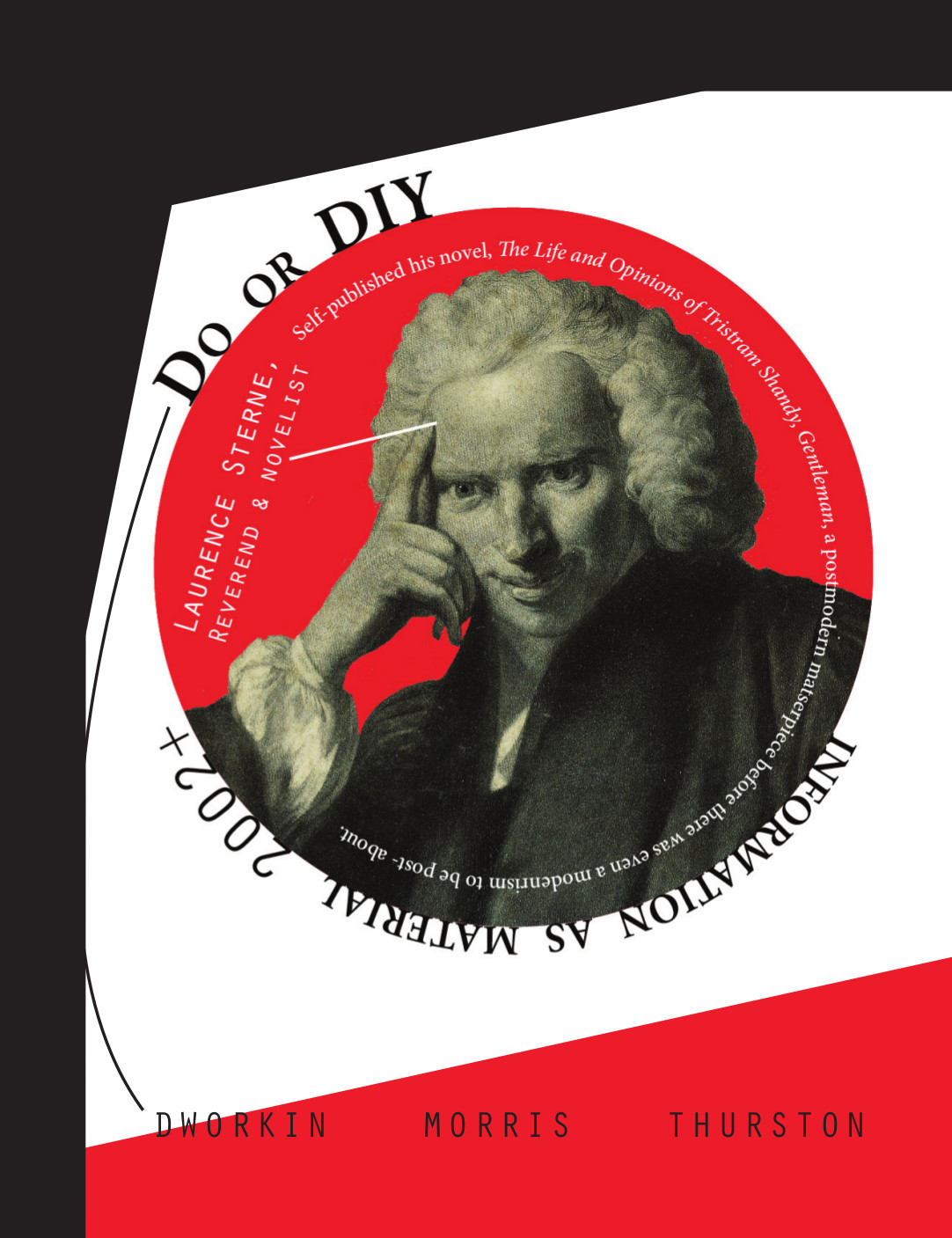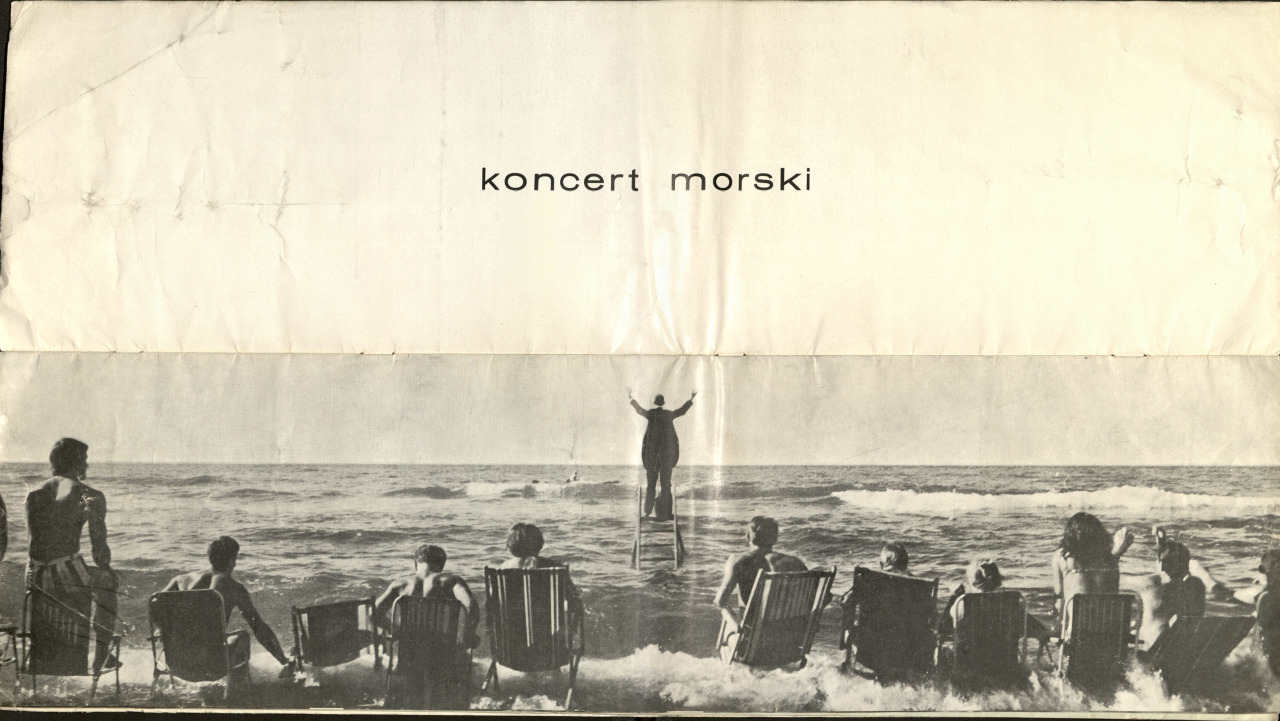Do or DIY (2012–) [EN, ES, SK]
Filed under booklet | Tags: · diy, history of literature, publishing

“Mixing anecdote and advocacy, the first section of this two-part polemical essay offers an introduction to the concealed history of do-it-yourself publishing—as undertaken by some of the most revered writers in the modern Western literary canon, from Laurence Sterne (1713–1768) to Irma Rombauer (1882–1941) via Virginia Woolf (1871–1922) and Derek Walcott (1930–).
Having looked back at some of the monuments of literary history, the second section takes its charge from the epigraph, ‘Institutions cannot prevent what they cannot imagine’, and looks forward to the political praxis of the 21st-century’s digital future.
The essay was first commissioned by the Foreword for the London Art Book Fair 2011 catalogue.”
by Craig Dworkin, Simon Morris, Nick Thurston
Publisher Information as Material, York/UK, 2012
Creative Commons Attribution BY 2.5 Licence
ISBN 9781907468124
18 pages
via Electronic Poetry Center
Expanded second edition
by Riccardo Boglione, Kate Briggs, Craig Dworkin, Annette Gilbert, Marianne Groulez, Simon Morris, Carlos Soto Román, Nick Thurston
Publisher Information as Material, 2015
Creative Commons Attribution BY 3.0 Licence
24 pages
Review: Christina Patterson (The Independent, 2012).
Exhibition (Whitechapel Gallery, London, 2012)
Exhibition (Birkbeck, London, 2015)
Interview (Afterall, 2012)
Publisher
WorldCat
Do or DIY (English, 2012)
Do or DIY (Spanish, trans. Carlos Soto-Roman, 2013, added on 2025-9-18)
Vydaj si sám (Slovak, trans. Kristína Pavlovičová, partial trans., 2014)
Do or DIY (2nd ed., English, 2015, added on 2025-9-18)
Diary of a Conference on Sexuality (1982)
Filed under booklet | Tags: · feminism, gender, sex, sexuality, theory

“Diary of a Conference on Sexuality is a conference program booklet designed by Hannah Alderfer, Beth Jaker, and Marybeth Nelson and published in conjunction with the ninth “Scholar and the Feminist” conference, “Towards a Politics of Sexuality,” held at Barnard College on April 24, 1982. Better known as the Barnard Sex Conference, the conference was a key event in the feminist sex wars of the 1980s. Organized by Carole Vance to explore the politics of sexuality, the conference was picketed by antipornography groups. While these protesters focused their objections on issues of pornography, S/M, and butch/femme, the conference addressed a much wider array of questions about women’s experiences of sexuality, some of which are represented here.
No ordinary conference program, the Diary included Vance’s invitation to presenters, a coauthored “Concept Paper” that described the conference’s aims and guiding questions, a list of speakers and schedule of events, as well as minutes from planning meetings, bibliographies of suggested reading, and a page devoted to each workshop. The Diary was, as Gayle Rubin later wrote, “intended to be something of an archival document.” Each speaker created a page in the Diary to represent her workshop; many of these included a “postcard” featuring some image that she found meaningful personally or in the context of the workshop. These images added to the visual impact of the program. With its striking images, its combination of politics, scholarship, and personal reflection, and its moments of insight, polemic, and humor, the Diary remains a compelling record of feminist collaboration.
In the days leading up to the conference, members of antipornography groups contacted the Barnard administration and issued a warning about what they saw as the “antifeminist” nature of the proceedings. In response, Barnard administrators confiscated 1,500 copies of the Diary two days before the conference. Despite subsequent reprinting, the Diary remains exceedingly rare.” (Heather Love, 2011)
Edited by Hannah Alderfer, Beth Jaker, and Marybeth Nelson
Publisher Faculty Press, New York, 1982
72 pages
via Dark Matter Archives
Commentary: Carole S. Vance (1984), Gayle Rubin (GLQ 2011).
PDF, PDF (18 MB)
See also conference proceedings (Pleasure and Danger, ed. Carole S. Vance, 1984, 462 pp)
Tadeusz Kantor: Panoramic Sea Happening (1967) [PL/EN]
Filed under booklet | Tags: · art, happening, performance

The Panoramic Sea Happening was the most spectacular and complex of all of Kantor’s happenings. It took place on 23 August 1967, during the 5th Koszalin Plein-Air convention in Łazy, a small seaside town near Osiek. Prepared for only a couple of participants (mostly for members and friends of the Foksal Gallery), it had an enormous audience among the plein-air’s guests and tourists on the beach. The happening consisted of four parts: ‘Sea Concert’ [Koncert morski], ‘Medusa Raft’ [Tratwa Meduzy], ‘Erotic Barbuyage’ [Barbujaż erotyczny] and ‘Agrarian Culture on the Sand’ [Kultura agrarna na piasku]. (Source)
Simultaneously with the happening, Submergence took place – an event organized by artists and critics associated with the Foksal Gallery. It lasted for two hours. The overall number of participants was 1600 (the actors and the audience). (Source)
On the fifth page of a booklet that followed the event, Eustachy Kossakowski‘s photograph of the ‘Sea Concert’ is reproduced. In this image, the painter Edward Krasiński stands on a platform a few yards into the surf, ‘conducting’ the sea while a group of people sitting in beach chairs in the foreground constitute an audience. This image has become iconic documentation of the artists, scholars, and performers surrounding the Foksal Gallery. (Source)
Page 14/15 of the booklet contains written reflections by Tadeusz Kantor, Wieslaw Borowski, and Hanna Ptaszkowska, in both Polish and English.
Publisher Koszalińskie Towarzystwo Społeczno-Kulturalne, [1967]
[16] pages, 16 x 58 cm
via Digitizing Ideas
Commentary: Karolina Czerska (Culture.pl, 2014, EN/PL/RU), Jerzy Hanusek (Estetyka i Krytyka, 2014, PL), Post/MoMA (David Senior, 2015, EN), Wikipedia (PL).
Worldcat
Booklet (PL/EN, PDF, 2 MB)
Script (PL/EN, PDF, 10 MB)
JPGs
131 photographs from the event, by Eustachy Kossakowski (at ArtMuseum.pl), some in higher resolution (Digitizing Ideas), some in color (#8-13, Culture.pl).
Comment (0)
